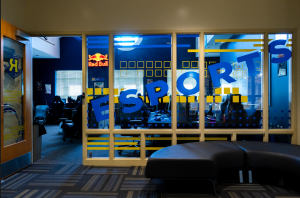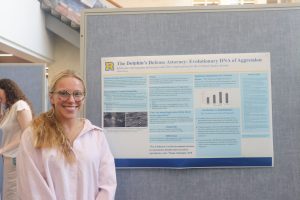The Internet, like many other great technological advancements, has become such an influential aspect of life that it is difficult to imagine a world without it. This is particularly interesting given that 17 years ago, many of us did not have Internet access or even a computer.
Now it seems we take its very existence for granted, as with our ability to access it wirelessly or via cable. But there are many people at Rollins who diligently work behind the scenes to ensure that this still relatively new technology and system of interconnection is available to all students. Chris Howe, a Rollins Network Engineer, is one such person.
“This August was my 14th straight Rollins Orientation,” said Howe. Originally a student, Howe ended up working for Rollins and has stayed here ever since. Initially, he said, “I was hired by Crummer to do laptop repair … that was a little over 10 years ago. Eventually that job turned into the laptop shop which was in Bush for a lot of years … about a year and a half ago I applied for the Network Engineer job and now I work in 422.”
The number 422 refers to Fairbanks 422, a new acquisition by the college which now houses different departments and several branches of Information Technology (IT).
From 422, Howe manages the wireless network on campus. So if you connect to the Internet via your laptop’s wireless connection at some point today, you are experiencing Howe’s handiwork. It is not always an easy job, in part because the technology is still changing. “When I first got the job [of Network Engineer],” said Howe, “we had 250 access points and about 800 wireless connections at our peak times to now, with 378 access points and just over almost 1,700 connected users just on the wireless.”
But the sheer number of people that access wireless connections is not the only thing that makes managing a network difficult, there is also the need to keep that network secure.
“One bad machine can come on campus and shut the entire network down,” said Howe.
To prevent that from happening, all computers accessing the network have a program called Bradford installed on them. “Bradford, when operating by design, is a security guard,” said Howe. “Bradford gives us a way to make sure that computers are up to date. Bradford also gives us the opportunity to track computers that are spewing packets as a virus would, or attacking our firewall. A lot of times viruses or malware attack our firewall without a user being aware of it. Bradford gives us a way to take the computer off the network and notify the user.”
After 14 years, Howe has seen a lot that Rollins has to offer, but at the end of the day, it is the student population that makes staying at Rollins worthwhile. “I enjoyed the students when I was a student here; I enjoy the students today,” said Howe.
“I think Rollins is an interesting place to have a lot of different kinds of people interacting. People from different backgrounds, different areas of the country, and different areas of the world.”
Perhaps it makes sense then that someone who finds joy in a diverse population should also work to manage the Rollins Internet.
After all, that is what the Internet is — a connecting network that bridges continents and cultures. From scholarly articles, politically charged tweets in the midst of a revolution, or cat videos, the Internet connects ideas and people in ways that we as a society, and Howe as an engineer, are still learning to manage and keep open.












Be First to Comment